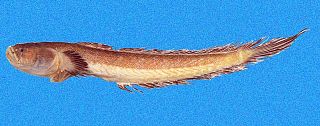
Felidae is a family of mammals in the order Carnivora, colloquially referred to as cats. A member of this family is also called a felid. The term "cat" refers both to felids in general and specifically to the domestic cat.

Python is a genus of constricting snakes in the Pythonidae family native to the tropics and subtropics of the Eastern Hemisphere. Currently, 10 python species are recognized.

A critically endangered (CR) species is one that has been categorized by the International Union for Conservation of Nature (IUCN) as facing an extremely high risk of extinction in the wild.

Onychogomphus is a genus of dragonflies in the family Gomphidae. They are commonly known as Pincertails.
Trigonoscuta is a genus of broad-nosed weevils in the family of beetles known as Curculionidae. There are at least 60 described species in Trigonoscuta.
Trigonoscuta yorbalindae was a species of beetle in family Curculionidae. It was endemic to the United States.

Bat Conservation International (BCI) is an international non-governmental organization working to conserve the world's bats and their habitats through conservation, education and research efforts.

The Quechuan mouse opossum is a South American opossum species of the family Didelphidae. It is known from two areas of montane forest on the eastern slopes of the Andes in Peru, at altitudes from 300 to 2700 m. The type locality in the Valle de Occobamba is in the southern area, in Cuzco Region, while the northern area is in the vicinity of Moyobamba in San Martín Region. The true range may be more extensive and possibly extends into Bolivia. The northern area has suffered from habitat destruction, but the southern area is not seriously degraded.
The white-fin smooth-hound is a species of tropical houndshark, and part of the family Triakidae, found in the Bali and Indonesia areas of the Western Pacific.

The World's 25 Most Endangered Primates is a list of highly endangered primate species selected and published by the International Union for Conservation of Nature Species Survival Commission Primate Specialist Group, the International Primatological Society (IPS), and Conservation International (CI). The 2012–2014 list added the Bristol Conservation and Science Foundation (BCSF) to the list of publishers. The IUCN/SSC PSG worked with CI to start the list in 2000, but in 2002, during the 19th Congress of the International Primatological Society, primatologists reviewed and debated the list, resulting in the 2002–2004 revision and the endorsement of the IPS. The publication has since been a joint project between the three conservation organizations and has been revised every two years following the biannual Congress of the IPS. Starting with the 2004–2006 report, the title changed to "Primates in Peril: The World's 25 Most Endangered Primates". That same year, the list began to provide information about each species, including their conservation status and the threats they face in the wild. The species text is written in collaboration with experts from the field, with 60 people contributing to the 2006–2008 report and 85 people contributing to the 2008–2010 report. The 2004–2006 and 2006–2008 reports were published in the IUCN/SSC PSG journal Primate Conservation, while the 2008–2010 and 2010-2012 report were published as independent publications by all three contributing organizations.

The Amazonian brown brocket, also known as the small brown brocket, is a small species of deer that is almost entirely restricted to South America. It is known from Panama, Colombia, Venezuela, Guyana, Suriname, French Guiana, eastern Ecuador, eastern Peru, Brazil and possibly northern Bolivia. Habitats it is found in include primarily nonflooded Amazonian tropical rainforest, and locally also tropical deciduous forest and xeric shrublands, at altitudes up to 1,500 metres (4,900 ft). However, reports from the latter habitats may actually represent M. gouazoubira.

Akko rossi, the blackfin specter goby, is a species of goby from the family Gobiidae. It is mostly known from one specimen from El Salvador. It lives in burrows in black mud.

Andrew Rebori's house bat is a species of bat found in Africa.
Trigonoscuta cruzi is a species of broad-nosed weevil in the beetle family Curculionidae. It is found in North America.
Trigonoscuta mohawki is a species of broad-nosed weevil in the beetle family Curculionidae. It is found in North America.
Trigonoscuta stantoni, known generally as the Stanton's trigonoscuta weevil or Santa Cruz island shore weevil, is a species of broad-nosed weevil in the beetle family Curculionidae. It is found in North America.













